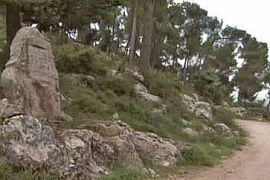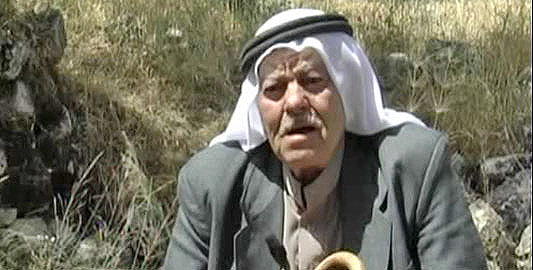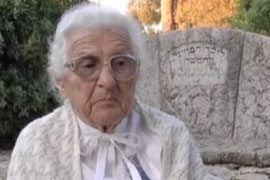A village in ruins
A Palestinian town is a testament to where Arab and Jewish societies collided.

 |
| Jamil returned to the ruins of Bayt Thul, a village he called home 60 years ago |
The ruins of a Palestinian village are shaded by forests of pine trees in the hills around Jerusalem.
They are all that remain of Bayt Thul – a village that was mentioned in Ottoman records as far back as the 16th century – and they tell a story of expulsion and dispossession.
Jamil, who was just 12 years old when he fled the village 60 years ago, recalled how loudspeakers broadcast announcements urging the villagers to run for their lives.
News was spreading of the infamous massacre at Deir Yassin which had just fallen to the Jewish militia.
Now, 60 years later, Jamil stands in the ruins of the home he thought he would return to after only a few days, and reflects on decades of exile.
“It did not happen just to me,” he said.
“If that had been the case one would have exploded and died with grief. But this happened to everyone like the rain which falls over all people. It happened to everyone in Palestine.”
The 320 Palestinians who lived in Bayt Thul were part of a huge wave of refugees expelled from their homeland – more than 700,000 of them in what Arabs refer to as the Nakba, or catastrophe.
Remembering
 |
| Badana, an early kibbutz founder, escaped death at the hands of the Nazis in Poland |
A Jewish memorial which holds the key to the destruction of Bayt Thul stands in the forest overlooking the village.
This is where two societies – Arab and Jewish – collided more than a decade before the creation of the state of Israel.
The memorial commemorates five men from Ma’ale HaHamisha, a neighbouring kibbutz, ambushed and killed by Palestinian armed men.
They came from a so-called stockade settlement founded to establish a permanent Jewish presence in what was then British-mandated Palestine.
As committed Zionists and communists, they left Poland to fulfil their dream of returning to a homeland after 2,000 years of exile.
Ninety-three-year-old Badana was one of the founding members of the Ma’ale HaHamisha kibbutz and her passion for Israel has not dimmed with age. Nor has her memory of her boyfriend who died in the ambush.
“An enemy who raises a rifle against me? Then I remember the verse from the Bible. If someone stands up to kill you, kill him yourself,” she says.
Like all the other founding members of the kibbutz, Badana lost every member of the family she left behind in Poland – victims of the Nazi death camps.
A memorial to the six million Jews killed in the Holocaust stands at the entrance to the kibbutz.
Heroism and suffering
| IN VIDEO |
Every year, every community in Israel remembers those who have given their lives for the state.
The story they recount is one of heroism and sacrifice. But they do not mention the suffering of the Palestinians. Instead, they glorify the founding of the self-proclaimed Jewish state – a haven after the Holocaust.
Every day, Avram Burg goes on a training run that passes between the kibbutz and the ruins of Bayt Thul. The former head of the Jewish Agency now thinks defining Israel as a Jewish state is the key to its end.
Meanwhile, Jamil, who fled from Bayt Thul 60 years ago, now lives in the Shuafat refugee camp in Jerusalem. He hates its narrow alleyways and the lack of any playgrounds for his children and grandchildren – all 86 of them.
The camp is a far cry from his memory of the beauty of Bayt Thul but Jamil knows mere politicians will never win him the right of return to his village.
For that he counts on God.
